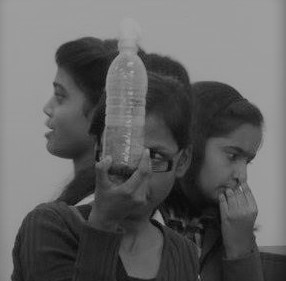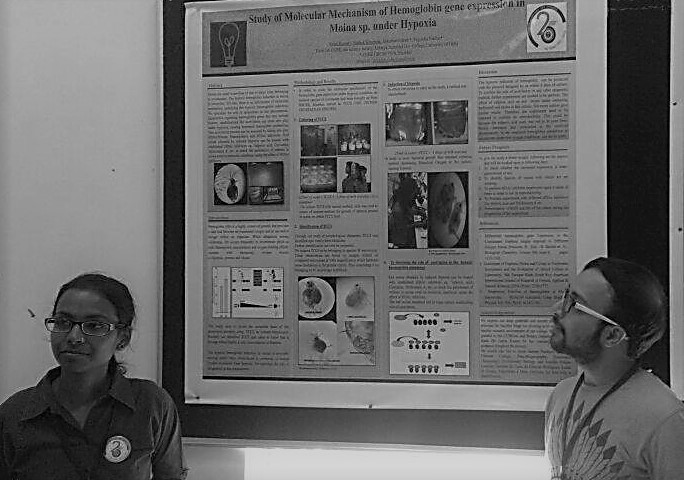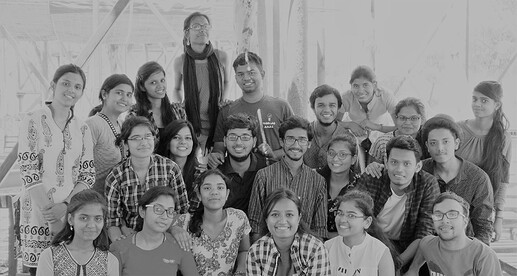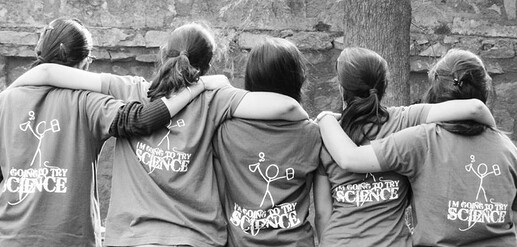
As I write this, I shall try not to feel bad about all the details that I will be missing out due to the limitation of space and one’s patience to read. The humongous task to concise almost 5 years of being in CUBE, is simply overwhelming.
CUBE, Collaboratively Understanding Biology Education, under the aegis of HBCSE, TIFR, Mumbai is a platform that brings together people interested in biology from all levels of academic construct including school students to research scientists.
http://www.hbcse.tifr.res.in/research-development/collaborative-undergraduate-biology-education-cube
I became part of it when I enrolled for my Bachelor’s degree in Acharya Narendra Dev College, University of Delhi in the year 2014. When I joined CUBE, while being a part of science society, Th!nk-Lab, it was majorly for fun and extra-curricular activities. But soon, it became the most common ‘excuse’ and sometimes the only motivation to go to college. Starting from August 2014, there were many ‘backyard organisms’ that we tried to make ‘model’ for our pursuit of curiosity.
Initiatives as simple as collecting various water and soil samples and observing it under a microscope were not just curiosity but also driving force to prospective science. We tried to culture all sorts of organisms including bacteria, nematodes, rotifers, ciliates, waterfleas, spiders, snails, earthworms, butterflies and fruitflies besides the ones that I might not recall now. Most of these organisms were collected from wild, however the CUBE network also helped us to study established lab strains such as Drosophila melanogaster (fruitflies from labs of Mumbai University and Delhi University), Caenorhabditis elegans N2(obtained from NII, Delhi), Eisenia foetida (bought from agricultural farms), Hydra(obtained from Pune University). The challenge was to try culturing them without conventional nutrient medium and finding the simplest possible alternative food source that would include banana peels to boiled milk. This might not have been the best way to culture them but there would not have been any better way either to study them independently without much aid from sophisticated labs.
The sheer pleasure and privilege of having attempted to study these organisms did not just help us to appreciate the diversity of life, but also the fact that all of it has many common characteristics. The appreciation lied not only in seeing how beautiful they are, but also that each life is so unique and has arisen after millions of years of survival, adaptation, and heredity. This ‘feelings for organism’ inculcated responsibility as a scientist towards our study organism while we still were young and not yet sacrificing life in attempts to making a career out of it.
To say that it was an easy task to be more interested in learning outside the classroom will be a half-truth. It was not. Daily attention to cultures along with 9-5 class hours in one of the geekiest science colleges of the university was a challenge. Thanks to occasional bunking(within permissible limits) and our good organizational skills, we could take care of things. But the major credits for our confidence goes to then Principal of the college, Dr. Savithri Singh who would constantly encourage our endeavors without ever compromising our independence. Dr. Sarita Kumar who would give her lab space and mentorship by all means possible. And thanks to Dr. Ravi Toteja who stood by our side whenever needed.
The apparent interest of anyone then will be that what could have been some school students or undergraduates be interested in. Actually a lot of things. Those might not have been the greatest questions of all time, and definitely not the first time to be ever asked out. But as far as we were aware they were genuine and could easily be pursued. For instance, the trends in earthworm regeneration, mechanism of phenotypic plasticity in water-fleas, earthworm gut micro-flora and their symbiotic relationship, ecology of bees in different regions of Delhi, phenology of various trees, seasonal diversity of butterflies and what not! Some of them were so seriously pursued that we were able to present in many conferences – IAN 2015, Biosparks JNU 2016, AICBC 2016 and several others. None of this would have been possible without ‘causeries’ and discussions with fellow CUBE members.

Well, I could continue further by mentioning more about the ‘professionalism’ of daily science, but as this is a blog, so I assume I can take the liberty to add more personal details. When people explore and work together, they bond. I have earned many friends in the last five years, not only from my college but from all around the country as a consequence of being in this nationwide network. By staying in a community that does not discourage failures, mistakes, and naivety, one becomes kinder, tolerant and more empathetic to people around us. I think as a society, if people need to believe in anything, this is it. CUBE has taken this initiative and carrying this on with diligence and persistence. I am thankful for my serendipitous encounter to CUBE. Thanks to MC Arunan and Nagarjuna G, who have been the ‘Science Dudes’ to work out all this. At the same time, I would not refrain from mentioning that CUBE needs more feedback and needs to work on few backlashes that it has, but reaching out to more and more people is the way to work upon that. Finally, I’ll like to tell you an inside truth, people might leave CUBE, but CUBEism does not leave people. For anyone who has been part of it at any point of time will agree that- It is significant to do science, not necessarily become a scientist. Once a CUBEist, always a CUBEist!
Obviously, I could go on and on, but I would prefer to leave you all with this video that I made about a year and half ago. Bear with bad audio and failed attempt at video-making overnight, nevertheless, it is true to the essence of having an unforgettable experience.
(Little Background to the video- A waterflea was isolated from Mumbai in 2012. This isolated crustacean was believed to be Daphnia based upon preliminary assumptions that continued for crazy 4 years while being studied for serious long term objective. A diligent follow up from 2016 onward helped to make a claim of it being Moina , a close relative of Daphnia but not Daphnia . Now it has been sequenced and can be found on NCBI as Moina Macrocopa strain JSK1)


